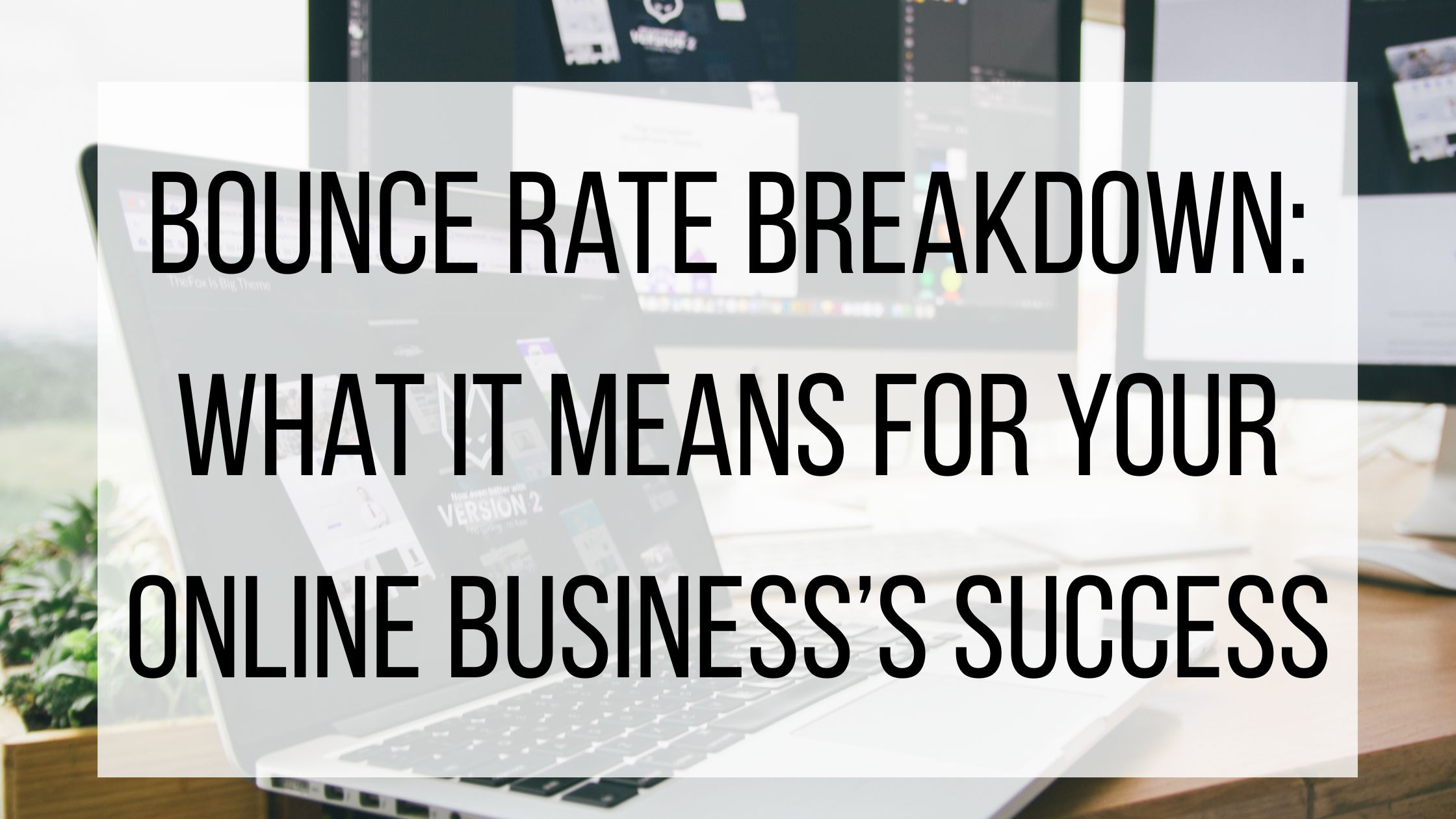Bounce Rate Breakdown: What It Means for Your Online Business’s Success

A main objective of any website is to convert visitors into customers. While not every visitor will make a purchase, it’s crucial to monitor metrics like time spent on the site, conversion rates, and how many users leave after viewing just one page. One of the most valuable metrics to track in this regard is your website’s bounce rate.
What Is A Bounce Rate?
A bounce rate refers to the percentage of visitors who visit your website and leave having only visited a single page. It’s calculated by dividing the number of single-page sessions by the total number of visitors. You can track bounce rate over any time frame- daily, weekly, monthly, and so on. Monitoring your bounce rate across different periods can help reveal useful trends. For example, if your bounce rate was high in January but low in May, analyzing what changes might have occurred can help you understand the cause and take steps to reduce it going forward.
How To Reduce Your Bounce Rate:
Establish Your Baseline
The first step in reducing your bounce rate is to figure out what your average bounce rate is. Track it over a set period to get a clear picture. If your bounce rate is already low, you probably do not need to make any major changes. If it’s higher than you’d like, knowing where you stand gives you a solid starting point. From there, set realistic goals. Bounce rates won’t drop overnight, so focus on achievable milestones to gradually move toward your target.
Focus On User Experience
Most visitors won’t stick around if your site is frustrating to use. Make it easy for them to find what they’re looking for. Ask yourself: Is your content easy to read? Does your site load quickly? Is navigation intuitive? Poor readability, slow load times, and confusing layouts are all common reasons users leave after just one page. Prioritizing a smooth, user-friendly experience is essential to keeping visitors engaged and reducing your bounce rate.
Review Your Content
Start by evaluating the content on each page of your website. Clarity is key- everything should be easy to understand and visually appealing. Is the layout clean and inviting? Is the language clear and engaging? Are your images or videos high-quality? If a visitor clicks through to a page, make sure they can quickly find the information they’re looking for.
Keep product descriptions concise and focused on the key benefits. Align your tone with your brand identity and tailor it to your target audience. Some audiences respond better to a formal, professional voice, while others may prefer a more casual or playful tone. Don’t be afraid to experiment with different approaches to see what resonates best—there’s no “one-size-fits-all” when it comes to content, as long as it speaks to your audience.
Include A Strong Call-To-Action
Every page should have a clear and compelling Call-To-Action (CTA) that encourages visitors to take the next step. Whether it’s exploring another product, subscribing to your newsletter, reading your blog, following you on social media, or making a purchase, your CTA should guide users to continue engaging with your brand.
Make sure your CTA stands out visually but doesn’t overwhelm the page. It should feel like a natural next step in the user journey. Test different types of CTAs and placements to see what performs best—small adjustments can have a big impact on reducing bounce rate and boosting conversions.
Reducing your bounce rate really just comes down to understanding your audience. While some visitors will leave after viewing just one page, no matter how great your website is, that doesn’t mean they won’t return. The key is to keep learning what your customers are looking for and make thoughtful improvements based on their behavior. Even small adjustments can significantly impact how long users stay on your site. Keep your content updated, monitor performance regularly, and keep track of what works. With consistent effort, you’ll see your bounce rate start to drop!


